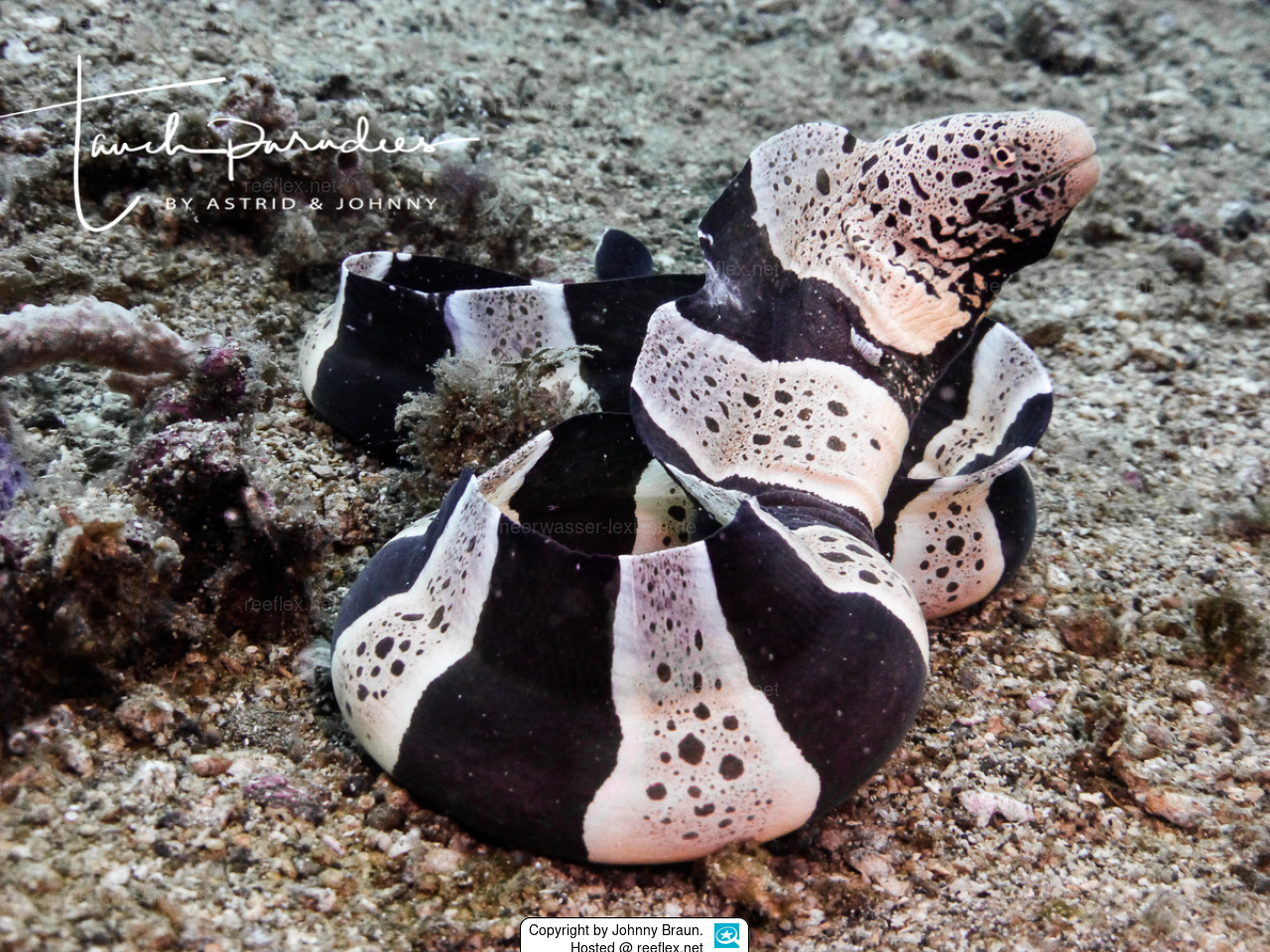Info
Gymnothorax chlamydatus Snyder, 1908
The banded mud moray is found in coral reefs in the western Pacific Ocean. It was first named by Snyder in 1908, because of dark bands along its body.
Occurs in coastal sand and mud habitat, living in holes near rubble or reef, inhabits shallow inshore reefs.
Feed on small fish and crustaceans.
Jumping guard
A jumping guard prevents (nocturnal) fish from jumping out.
Wrasses, blennies, hawkfishs and gobies jump out of an unprotected tank in fright if their night rest is disturbed, unfortunately these jumpers are found dried up in the morning on carpets, glass edges or later behind the tank.
https://www.korallenriff.de/en/article/1925_5_Jump_Protection_Solutions_for_Fish_in_the_Aquarium__5_Net_Covers.html
A small night light also helps, as it provides the fish with a means of orientation in the dark!
The banded mud moray is found in coral reefs in the western Pacific Ocean. It was first named by Snyder in 1908, because of dark bands along its body.
Occurs in coastal sand and mud habitat, living in holes near rubble or reef, inhabits shallow inshore reefs.
Feed on small fish and crustaceans.
Jumping guard
A jumping guard prevents (nocturnal) fish from jumping out.
Wrasses, blennies, hawkfishs and gobies jump out of an unprotected tank in fright if their night rest is disturbed, unfortunately these jumpers are found dried up in the morning on carpets, glass edges or later behind the tank.
https://www.korallenriff.de/en/article/1925_5_Jump_Protection_Solutions_for_Fish_in_the_Aquarium__5_Net_Covers.html
A small night light also helps, as it provides the fish with a means of orientation in the dark!







 Johnny Braun, Luxemburg
Johnny Braun, Luxemburg


























































